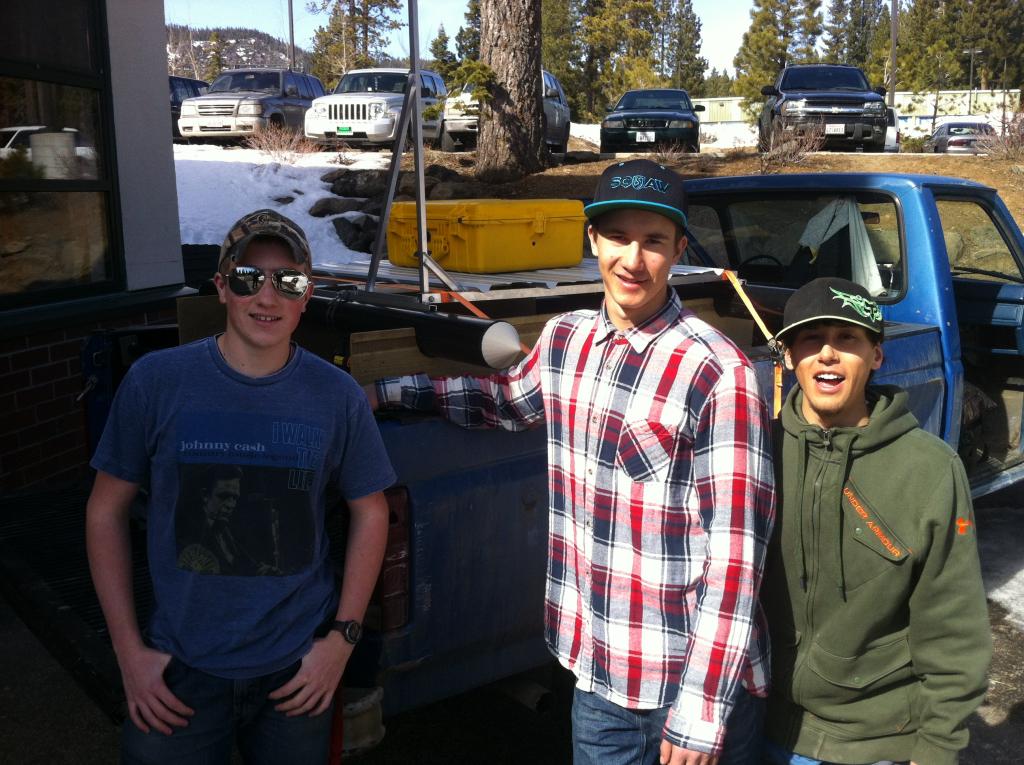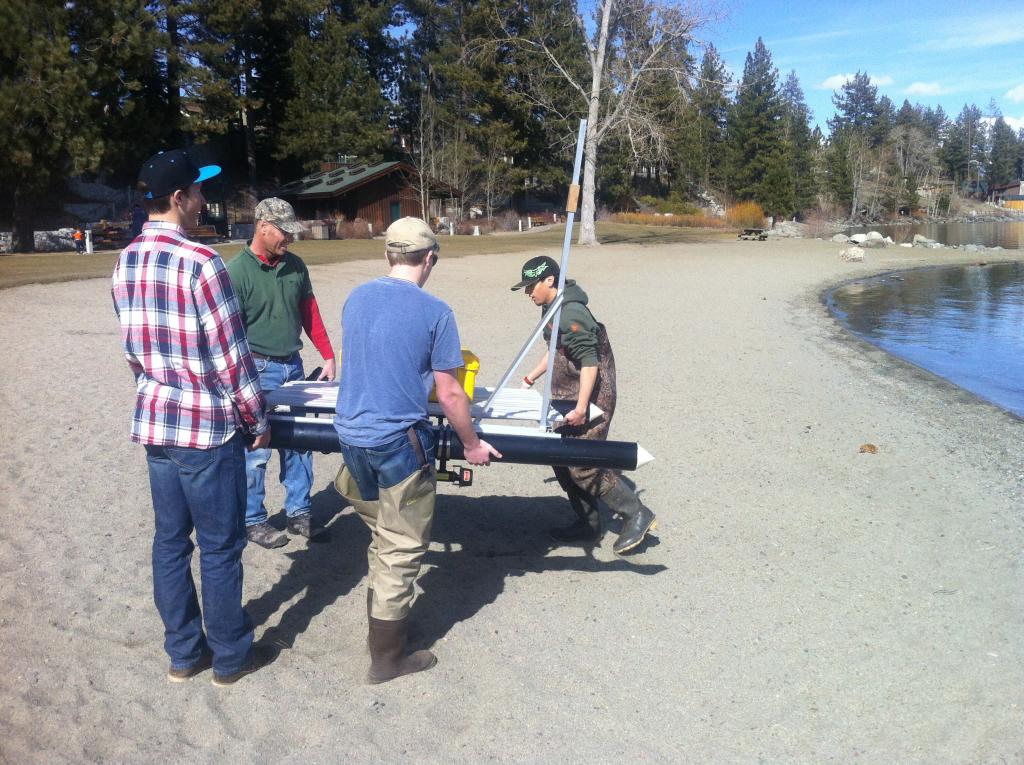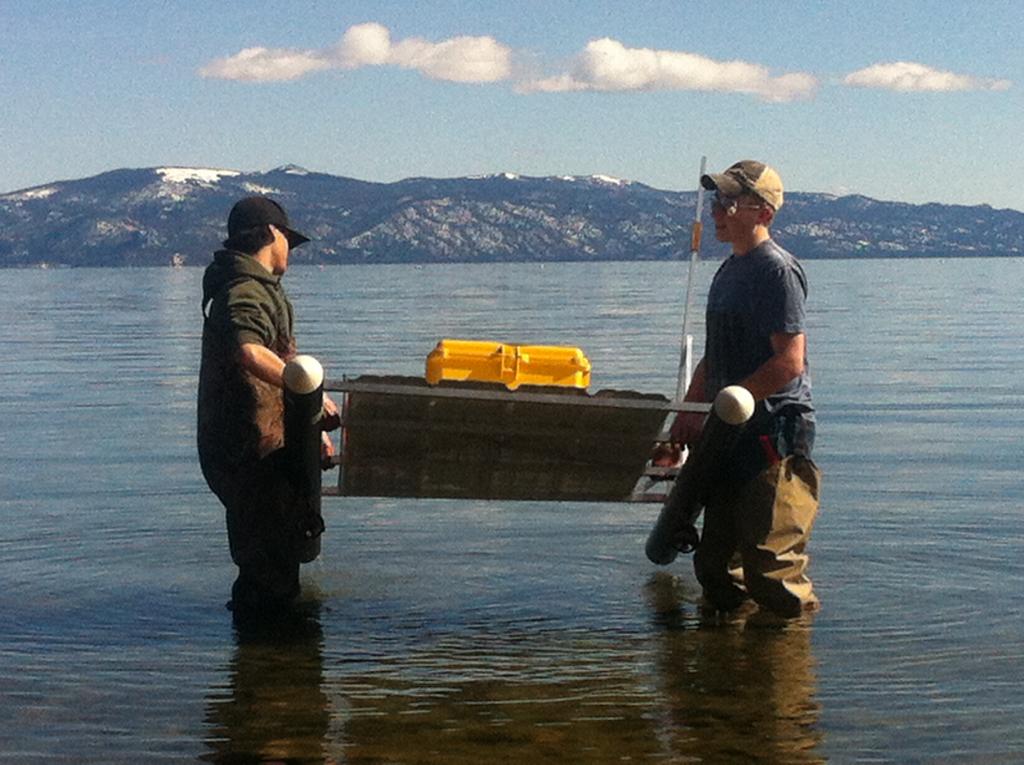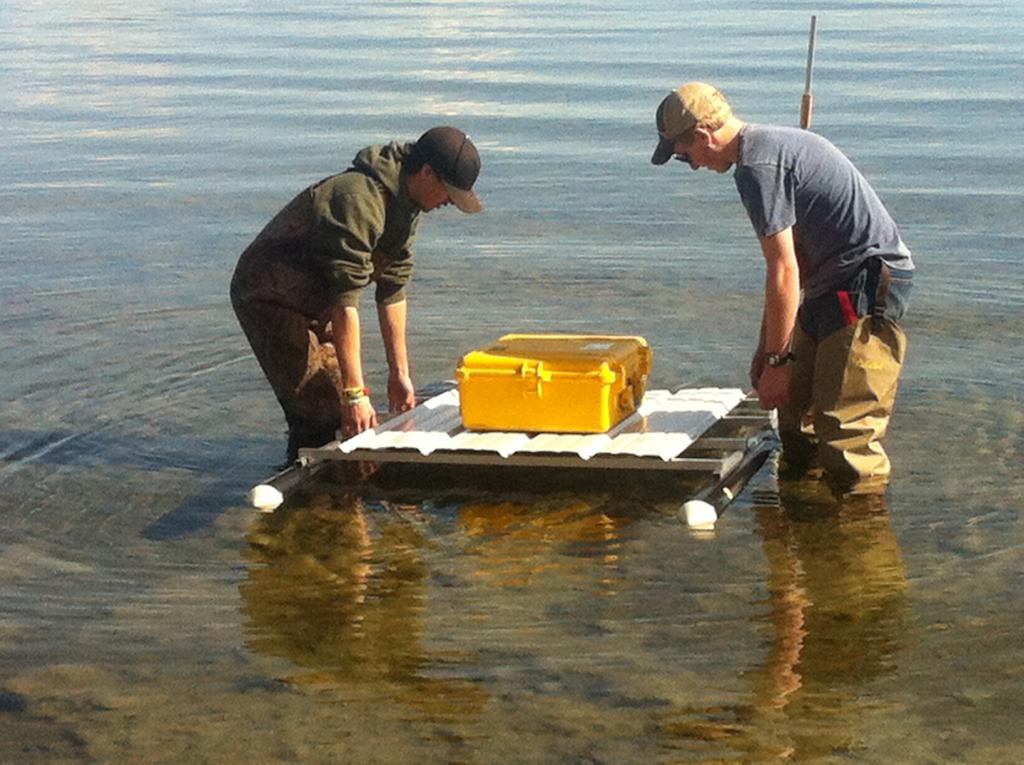North Tahoe High School Students and their Autonomous Cataraft!
 Ken Gracey
Posts: 7,419
Ken Gracey
Posts: 7,419
Hey all,
I have volunteered steadily over the last year at our local middle and high school to start up a robotics program http://forums.parallax.com/entry.php/833-Parallax-President-Ken-Gracey-gets-Hands-on-Teaching-Robotics. This year, the high school teacher Ms. Butterworth gave the students the opportunity to do a full-semester project in robotics. Zachary, Alex and Patrick chose the following mission:
Their project has been taken in steps:
So we went down to the lake today. Zach and Alex put on their waders and they carried the craft into the lake. Right away we noticed some problems: it wasn't nearly as buoyant as we had calculated it to be; the hulls were taking on some water through their 3-D ABS printed nosecones (which are solid, and heavy) which were not properly sealed; and that the whole system weighs more than we initially projected with the big batteries. So we pulled it from the lake and they seemed a bit deflated.
Now they've decided to go to 6" ABS with caps, and they won't violate the chamber after it's sealed. I might also bring them a Minn Kota trolling motor (we're currently using Crustcrawler thrusters).
We have until June to make progress, and I'll update this thread as we proceed. At some point you'll see these students here on the forum. They're fantastic people (Eagle Scouts, volunteers, job holders at the hardware store) and full of laughs and good jokes. They could probably use a bit of encouragement right now, so...
Ken Gracey





I have volunteered steadily over the last year at our local middle and high school to start up a robotics program http://forums.parallax.com/entry.php/833-Parallax-President-Ken-Gracey-gets-Hands-on-Teaching-Robotics. This year, the high school teacher Ms. Butterworth gave the students the opportunity to do a full-semester project in robotics. Zachary, Alex and Patrick chose the following mission:
- Design and build a cataraft that can autonomously navigate the surface of Lake Tahoe, using GPS waypoints
Their project has been taken in steps:
- Design the craft.
- Build it.
- Test stability of the system in the water (today's effort).
- Add R/C control.
- Add GPS and Propeller for autonomous navigation. I'll be helping here a whole bunch - their programming experience is limited to Boe-Bots.
- Program for a GPS waypoint test, sending the craft miles out in the lake..
So we went down to the lake today. Zach and Alex put on their waders and they carried the craft into the lake. Right away we noticed some problems: it wasn't nearly as buoyant as we had calculated it to be; the hulls were taking on some water through their 3-D ABS printed nosecones (which are solid, and heavy) which were not properly sealed; and that the whole system weighs more than we initially projected with the big batteries. So we pulled it from the lake and they seemed a bit deflated.
Now they've decided to go to 6" ABS with caps, and they won't violate the chamber after it's sealed. I might also bring them a Minn Kota trolling motor (we're currently using Crustcrawler thrusters).
We have until June to make progress, and I'll update this thread as we proceed. At some point you'll see these students here on the forum. They're fantastic people (Eagle Scouts, volunteers, job holders at the hardware store) and full of laughs and good jokes. They could probably use a bit of encouragement right now, so...
Ken Gracey







Comments
Triple expanding foam works wonders for making all kinds of things float better.
It's like life jackets and floaties, all in one can...:)
-Tommy
COLD project! What's the water temperature? I ran a marathon at Lake Tahoe in October many moons ago. It was so cold that the gels in my fanny pack froze during the run.
Duane, you want in?
Ken, our local school district may soon be refocusing their curriculum to center around a maritime theme. As a consequence, the local professional community will almost certainly be called upon for assistance, and I suspect that my name will come up in the process. If so, I might need to consult with you about matters related to volunteer teaching, since, though not unwilling, I'm completely clueless (and a bit terrified by the prospect).
-Phil
Frank
Further, his "screw" inspired me thus: http://www.youtube.com/watch?v=w97Yvq4d6b4&feature=player_detailpage#t=83s
Good designers borrow, great designers steal!
I couldn't find it from an internet search, but I recall seeing a similar project a couple years ago where the students harvested the parts from a Minn Kota trolling motor and the motor could spin 360 degrees, making the craft very maneuverable. The weight of a 12 volt deep cycle battery and trolling motor are definitely a justifiable trade-off.
How will you be tracking the craft's performance? A second GPS setup with the Google Earth datalogger code? I assume you will have a chase vehicle when you get to the "miles of travel" test?
an interesting read: http://www.panbo.com/archives/2010/05/minn_kotas_i-pilot_robot_geonav_for_real_.html
It will be really cool to see this thing move to waypoints across the lake! What sort of batteries does the craft use?
And, I see you have discovered "Nose Cones" are not all that important with a wide, slow moving watercraft...
Keep up the good fun.
-Tommy
Ken Gracey